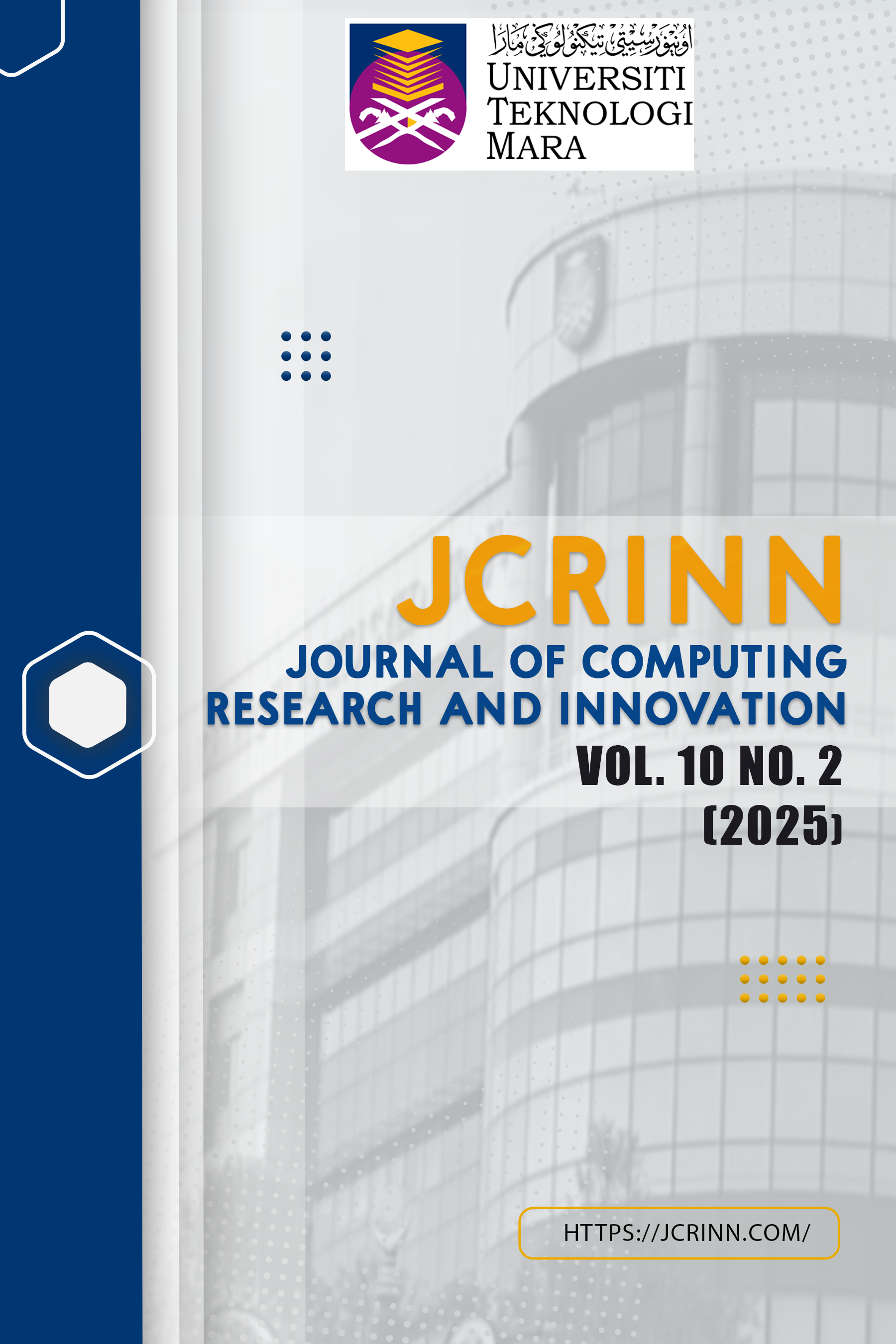Key Determinants of Athletic Success: A Fuzzy AHP Approach
DOI:
https://doi.org/10.24191/jcrinn.v10i2.520Keywords:
Athletic Success, Saaty’s Scale, Fuzzy Analytic Hierarchy ProcessAbstract
Athletic success is influenced by multiple factors, requiring a structured approach to identify and prioritize the key contributors to success. The Fuzzy Analytical Hierarchy Process (AHP) method provides a systematic decision-making framework to evaluate these factors by incorporating expert judgment and handling uncertainty in pairwise comparisons. This study employs the fuzzy AHP method to assess and rank the factors influencing an athlete’s successful in sports. Two experts, both lecturers from the Faculty of Sports Science and Recreation at UiTM Perlis, were involved in the evaluation due to their extensive experience and achievements in sports, making them suitable decision-makers for this study. Based on the findings, the factor of facilities plays a crucial role in sports performance, with a normalized weight of 0.4658, while coaching is identified as the most critical sub-factor, receiving a normalized weight of 0.2399. These results demonstrate that Fuzzy AHP effectively handles uncertainty and subjective judgments, providing valuable insights for athletes, coaches, and sports management in optimizing training and resource allocation.
Downloads
References
Aulia, L., Wulandari, R., Diana, A. F., & Sulistijanti, W. (2024). Application of fuzzy AHP and new fuzzy Servqual methods for performance evaluation based on perceptions of service quality and satisfaction towards the implementation of educational programs. Advances in Social Science, Education and Humanities Research, 856, 584-589. https://doi.org/10.2991/978-2-38476-273-6_63
Aziz, K. A. A., Idris, M. F. I. M., Daud, W. S. W., & Aziz, N. S. F. (2023). Nasyid competition assessment using fuzzy evaluation method. Journal of Computing Research and Innovation, 8(2), 12-19. https://doi.org/10.24191/jcrinn.v8i2.351
Aziz, K. A. A., Idris, M. F. I. M., Daud, W. S. W., & Fauzi, M. M. (2023). Application of fuzzy analytic hierarchy process (FAHP) for the selection of best student award. Journal of Computing Research and Innovation, 8 (2), 80-90. https://doi.org/10.24191/jcrinn.v8i2.345
Baker, J., Côté, J., & Abernethy, B. (2003). Sport-specific practice and the development of expert decision-making in team ball sports. Journal of Applied Sport Psychology, 15(1), 12–25. https://doi.org/10.1080/10413200305400
Bozanic, D., & Pamucar. D, (2013). Modification of the analytical hierarchical process method and its application in decision making in the defense system. Technology, 68(2), 327-334.
Bulent, O. M., Ugur, O., & Ozkan, B. (2017). Evaluation of sport mental toughness and psychological wellbeing in undergraduate student athletes. Educational Research and Reviews, 12(8), 483–487. https://doi.org/10.5897/ERR2017.3216
Covassin, T., Beidler, E., Ostrowski, J., & Wallace, J. (2015). Psychosocial aspects of rehabilitation in sports. Clinics in Sport Medicine, 34(2), 199–212. https://doi.org/10.1016/j.csm.2014.12.004
Denison, J., Mills, J. P., & Konoval, T. (2017). Sports’ disciplinary legacy and the challenge of coaching differently. Sport, Education and Society, 22(6), 772–783. https://doi.org/10.1080/13573322.2015.1061986
Diejomaoh, S. O. E., Akarah, E., & Tayire, F. O. (2015). Availability of facilities and equipment for sports administration at the local government areas of Delta State, Nigeria. Academic Journal of Interdisciplinary Studies, 4(2), 307-312. https://doi.org/10.5901/ajis.2015.v4n2p307
Graham, d. n., & Burns, g. n. (2020). athletic identity and moral development: An examination of collegiate athletes and their moral foundations. International Journal of Sport Psychology, 51(2), 122-140. https://doi.org/10.7352/IJSP.2020.51.122
Ibrahim, H. I., Jaafar, A. H., Muhammad, & Isa, A. (2016). Motivational climate, self-confidence, and perceived success among student athletes. Procedia Economics and Finance, 35, 503–508. https://doi.org/10.1016/S2212-5671(16)00062-9
Idris, M. F. I. M., Aziz, K. A. A., & Aziz, N. S. F. A. (2023). Selecting the effective ways to prevent Covid-19 from spreading using fuzzy AHP method. Journal of Computing Research and Innovation, 8(2), 112-123. https://doi.org/10.24191/jcrinn.v8i2.348
Kubiak, C. (2012). Perceived factors influencing athletic performance across career stages. Digitala Vetenskapliga Arkivet. https://www.diva-portal.org/smash/record.jsf?pid=diva2%3A619224&dswid=-7768
Macquet, A.-C., & Skalej, V. (2015). Time management in elite sports: How do elite athletes manage time under fatigue and stress conditions?. Journal of Occupational and Organizational Psychology, 88(2), 341-363. https://doi.org/10.1111/joop.12105
Nacar, E., Gacar, A., Karahüseyinoğlu, M., & Gündoğdü, C. (2013). Analysis for sports facilities in sports high schools in terms of quality and quantity: Central Anatolia region sample. Australian Journal of Basic and Applied Sciences, 7(2), 627–631. http://www.ajbasweb.com/old/ajbas/2013/February/627-631.pdf
Peng G., Han L., Liu Z., Guo Y., Yan J. & Jia X. (2021). An application of fuzzy analytic hierarchy process in risk evaluation model. Frontier in Psychology. 12, 715003. https://doi.org/10.3389/fpsyg.2021.715003
Rashid, N. S. A., Amin, N. A. M. & Mahad, N. F. (2020). Application of fuzzy analytic hierarchy process for contractor selection problem. Gading Journal of Science and Technology, 3(2), 109-117.
Saaty, T. L. (1980). The analytic hierarchy process, New York: McGraw-Hill. https://doi.org/10.21236/ADA214804
Saaty, T. L. & Ozdemir, M. S. (2015). How many judges should there be in a group?. Annals of Data Science, 1(3), 359-368. Springer. https://10.1007/s40745-014-0026-4.
Sresto, M. A., Siddika, S. Haque, M. N. & Saroar, M. (2021). Application of fuzzy analytic hierarchy process and geospatial technology to identify groundwater potential zones in north-west region of Bangladesh. Environmental Challenges, 5, 100214. https://doi.org/10.1016/j.envc.2021.100214
Suyudi, I. (2023). The digital revolution in sports: Analyzing the impact of information technology on athlete training and management. Golden Ratio of Mapping Idea and Literature Format, 3(2), 140–155. https://doi.org/10.52970/grmilf.v3i2.343
Van Laarhoven, P.J.M., & Pedrycz, W. (1983). A fuzzy extension of Saaty's priority theory. Fuzzy Sets and Systems, 11(1-3), 229-241. https://doi.org/10.1016/S0165-0114(83)80082-7
Wilson, R. S., David, G. K., Murphy, S. C., Angilletta, M. J. Jr., Niehaus, A. C., Hunter, A. H., & Smith, M. D. (2017). Skill, not athleticism, predicts individual variation in match performance of soccer players. Proceedings of the Royal Society B: Biological Sciences, 284(1868), 20170953. https://doi.org/10.1098/rspb.2017.0953
Zabihi, H., Alizadeh, M., Wolf, I. D., Karami, M., & Ahmad, A. (2020). A GIS-based fuzzy-analytic hierarchy process (F-AHP) for ecotourism suitability decision making : A case study of Babol in Iran. Tourism Management Perspectives, 36, 100726. https://doi.org/10.1016/j.tmp.2020.100726
Downloads
Published
How to Cite
Issue
Section
License
Copyright (c) 2025 Khairu Azlan Abd Aziz, Wan Suhana Wan Daud, Mohd Fazril Izhar Mohd Idris, Muhammad Amsyar Izmi, Rizauddin Saian (Author)

This work is licensed under a Creative Commons Attribution 4.0 International License.




